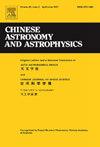SpaceX发布的星链星历研究
Q4 Physics and Astronomy
引用次数: 0
摘要
面对星链卫星对正常空间活动造成的重大干扰,SpaceX发布的星链星历表为星链卫星的相关研究提供了契机。然而,由于缺乏明确的指示,进一步利用这些数据是具有挑战性的。对星历文件的分析表明,它主要代表了未来3 d的预测轨道。对平均轨道元的研究表明,星历文件的前半部分是一个外推轨道,其扰动至少达到地球引力场的20阶,而后半部分是一个设计轨道,其扰动至少达到地球引力场的20阶。星历表包含协方差信息,提供精度细节。协方差分析表明,静止轨道和工作轨道卫星的星历表精度在第一天优于2 km,而上升轨道卫星的星历表精度在不到半天的时间内迅速提高到数千米。利用星历表的设计轨道,可以更准确地分析星座结构,特别是每颗卫星的指定位置,从而便于星链卫星的识别和跟踪。该研究为星链星历的广泛应用提供了有价值的见解,为星链卫星的机动探测和碰撞预警提供了有益的参考。本文章由计算机程序翻译,如有差异,请以英文原文为准。
Research on Starlink Ephemeris Published by SpaceX
Faced with the significant disruption of normal space activities caused by Starlink satellites, the Starlink ephemeris published by SpaceX provides an opportunity for relevant research on Starlink satellites. However, due to the lack of clear instructions, it is challenging to utilize the data further. Analysis of the ephemeris file reveals that it primarily represents the predicted orbit for the next 3 d. Research on mean orbital elements indicates that the front part of the ephemeris is an extrapolated orbit with perturbations up to at least the 20th order of Earth's gravitational field, while the latter part is a design orbit with perturbation. The ephemeris includes covariance information, providing accuracy details. The covariance indicates that the accuracy of the ephemeris for satellites located in parking and working orbits is better than 2 km in the first day, while the accuracy of satellites in raising orbit increases rapidly to thousands of meters in less than half a day. Utilizing the designed orbit of the ephemeris enables a more accurate analysis of constellation configuration, especially the designated position of each satellite, thus facilitating the identification and tracking of Starlink satellites. The study provides valuable insights for the extensive application of Starlink ephemeris, serving as a beneficial reference for maneuver detection and collision warnings of Starlink satellites.
求助全文
通过发布文献求助,成功后即可免费获取论文全文。
去求助
来源期刊

Chinese Astronomy and Astrophysics
Physics and Astronomy-Astronomy and Astrophysics
CiteScore
0.70
自引率
0.00%
发文量
20
期刊介绍:
The vigorous growth of astronomical and astrophysical science in China led to an increase in papers on astrophysics which Acta Astronomica Sinica could no longer absorb. Translations of papers from two new journals the Chinese Journal of Space Science and Acta Astrophysica Sinica are added to the translation of Acta Astronomica Sinica to form the new journal Chinese Astronomy and Astrophysics. Chinese Astronomy and Astrophysics brings English translations of notable articles to astronomers and astrophysicists outside China.
 求助内容:
求助内容: 应助结果提醒方式:
应助结果提醒方式:


